- Nature / Scenery
- History / Culture
- Gourmet
No.f_0028
Discover the Origins of "Washoku" in Osaka and Awaji Island
Registered as UNESCO Intangible Cultural Heritage in 2013, washoku, or Japanese cuisine, has captured the world’s attention. Deeply rooted in the climate, history, and daily life of Japan, it offers more than a dining experience—it invites travelers to explore the traditions and stories behind the cuisine. Why not head out on a journey to the lush, ingredient-rich island of Awaji and the food capital of Osaka and open a window onto the very origins of Japanese gastronomy?
Witness the Intensity of a Fish Auction Up Close
Floating in the eastern Seto Inland Sea, Awaji Island is flanked by two fast-moving straits: the Akashi Strait to the north and the Naruto Strait to the south. Since ancient times, the sea’s bounty of seaweed, abalone, and red sea bream was prized so highly that it was presented to the Imperial Court, earning Awaji the title of Miketsukuni—the Land of Divine Offerings.
Even today, Awaji is a powerhouse of agriculture, livestock, and above all, seafood, with a food self-sufficiency rate of over 100%. The island’s waters yield a dazzling seasonal variety: cherry trout (sakura masu) in spring, pike conger (hamo) in summer, red sea bream in autumn, and tiger pufferfish (torafugu) in winter.
Among the island’s many fishing ports, Yura Port is considered a “natural harbor” thanks to its vast fishing grounds stretching across Osaka Bay, the Kitan Strait, and the Kii Channel. Throughout the year, nearly 150 species of seafood are landed here, with the catch changing by season.
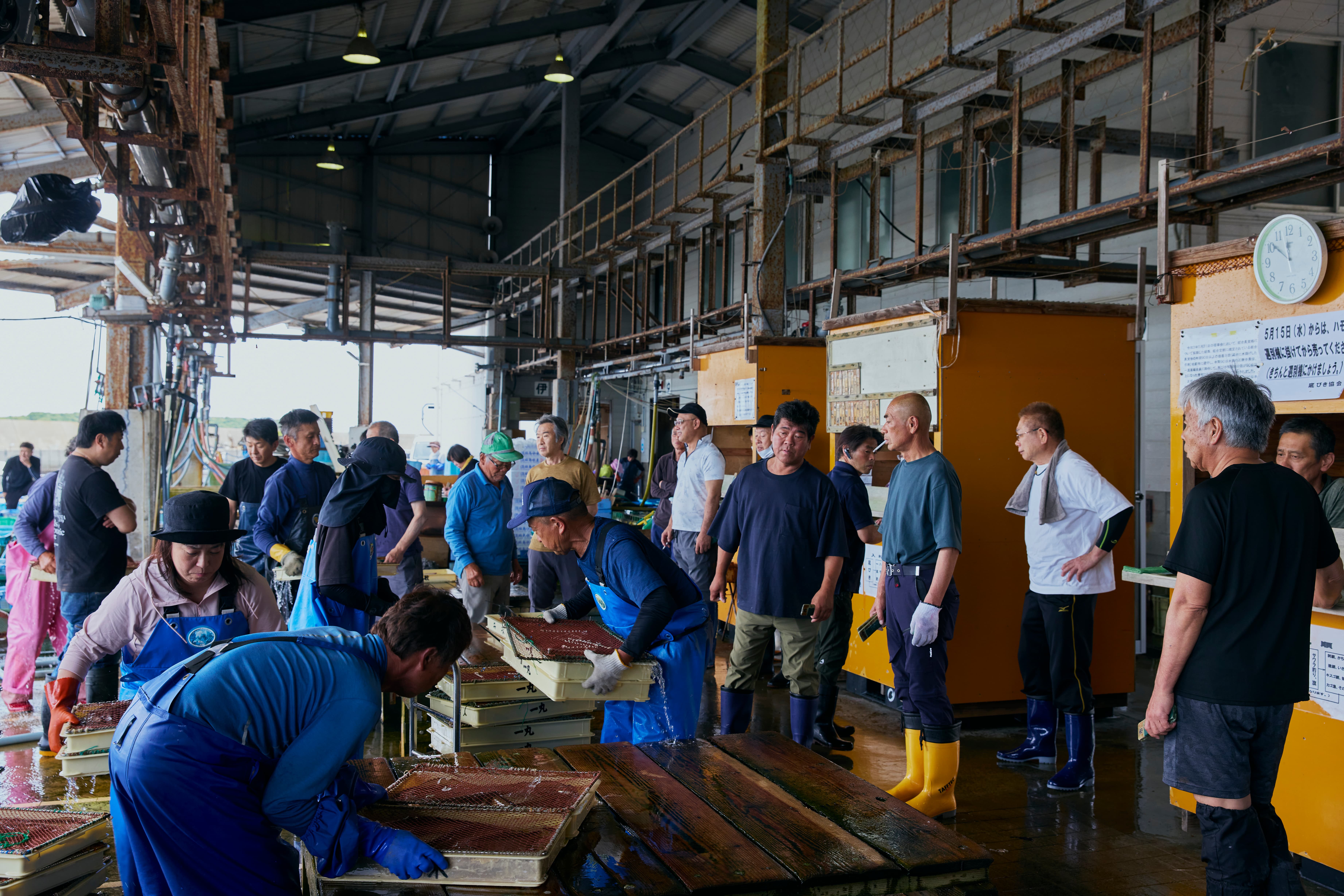

At the Yura Fisheries Cooperative, freshly landed seafood is traded daily in lively auctions known as seri. Visitors can take part in a rare “Auction Experience” led by Shuzo Yamaguchi of Awajishima Suisan, himself a licensed wholesaler. Limited to one session per day for up to four participants, this program grants behind-the-scenes access to an area normally off-limits to outsiders.
Fishing boats head out as early as 3 a.m. and begin returning around 8 a.m., unloading their catch until about 11:30, when the auction begins.
The experience starts at 10:30, with Yamaguchi guiding participants through the busy preparations on the docks. Along the way, guests can handle real specimens—spiny lobster, conger eel, pike conger—while learning fascinating facts about each species.
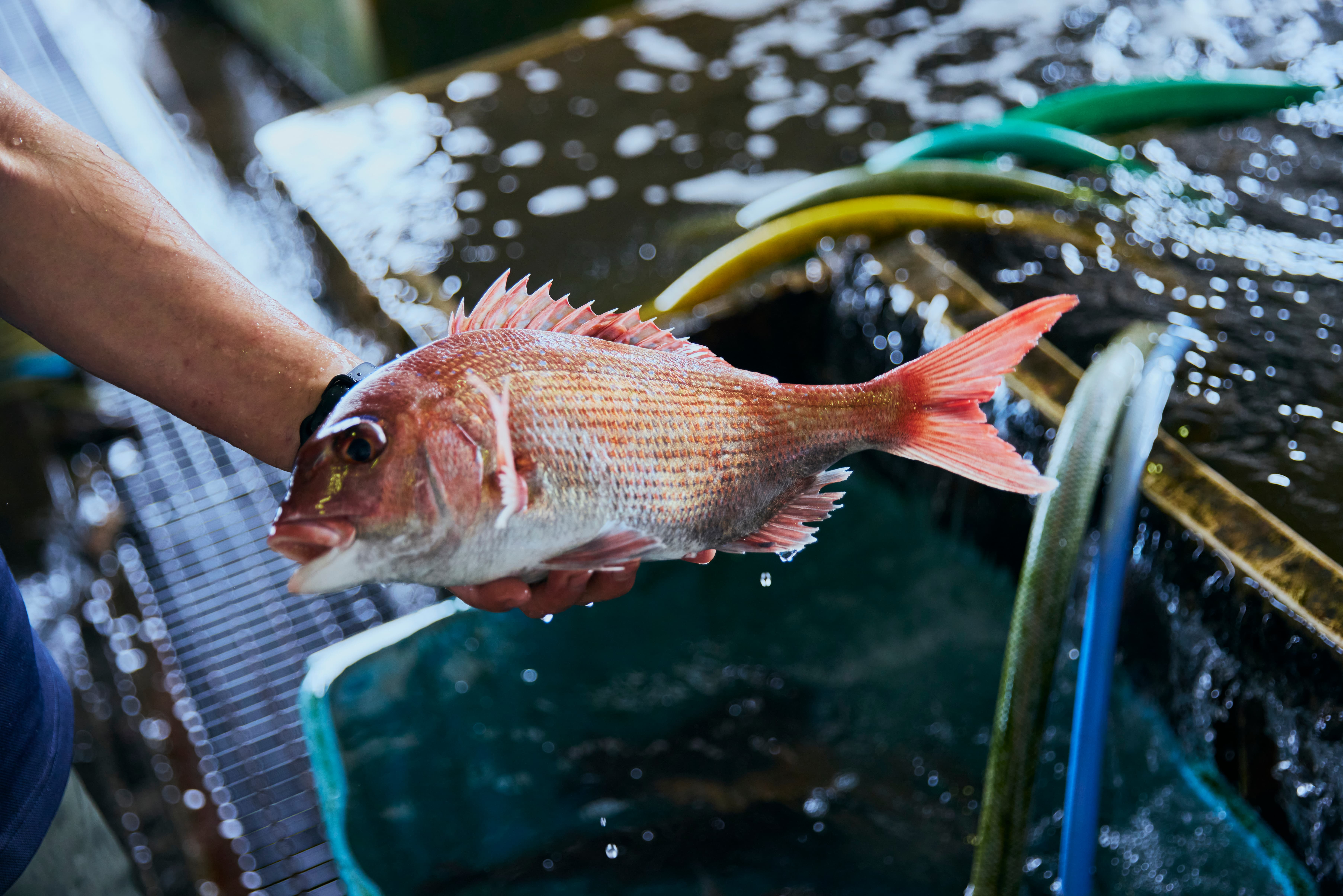 Red sea bream, in season from autumn to winter.
Red sea bream, in season from autumn to winter.
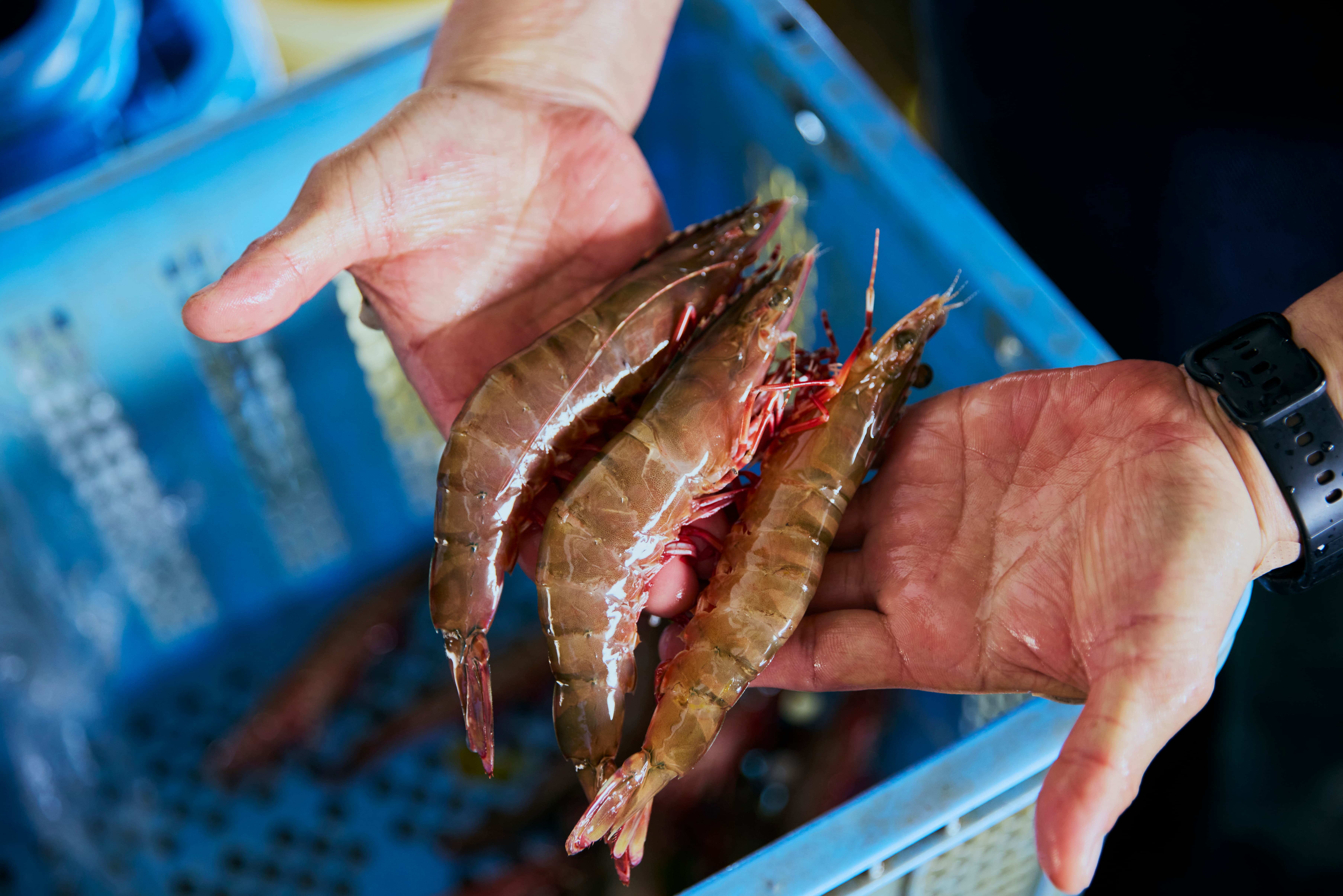 Autumn also brings a plentiful haul of shrimp.
Autumn also brings a plentiful haul of shrimp.
When the auction begins, the mood shifts in an instant. Wholesalers rapidly assess the quality of each catch, scribble their offers on palm-sized chalkboards, and toss them into a box. The highest bid is called, the lot is struck, and in just 30 seconds the next begins. Watching it unfold from the sidelines offers a palpable sense of both speed and tension.
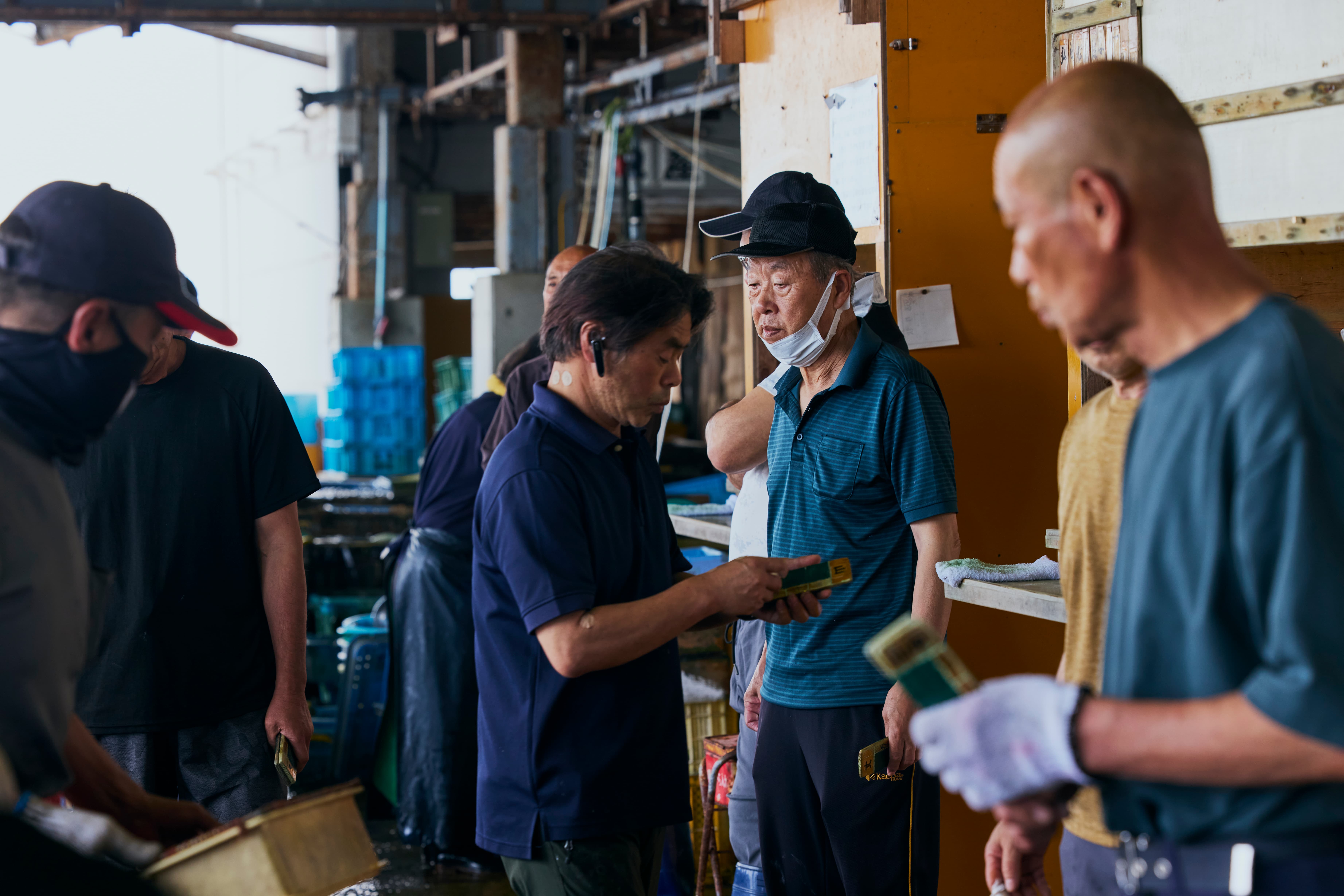 Yamaguchi jotting down a bid on his chalkboard.
Yamaguchi jotting down a bid on his chalkboard.
The auctions run for about an hour—but what exactly do buyers look for when judging fish so quickly?
“Fish protect themselves with a natural coating of slime. If it’s firm and intact, that’s a sign of quality,” explains Yamaguchi. “These are the tiny details that we check in just a few seconds.”
The Joy of Eating the Fish You Catch
After feeling the energy of the fish market and handling the freshly landed catch, the next step is an experience fishing for yourself.
North of Yura Port lies Sumoto, Awaji Island’s largest hot spring resort town, where luxury inns and hotels line the coastline.
One standout property is Yumesenkei Besso Amahara, a premium retreat where all 18 guest rooms feature ocean views and private open-air baths. Recognized with the highest Five Red Pavilions rating in the Michelin Guide Hyogo 2016, it sets the standard for island luxury.
A lush courtyard opens from the guest lounge, inviting leisurely strolls or a nap on one of the daybeds, all designed to let time drift at a slower pace.
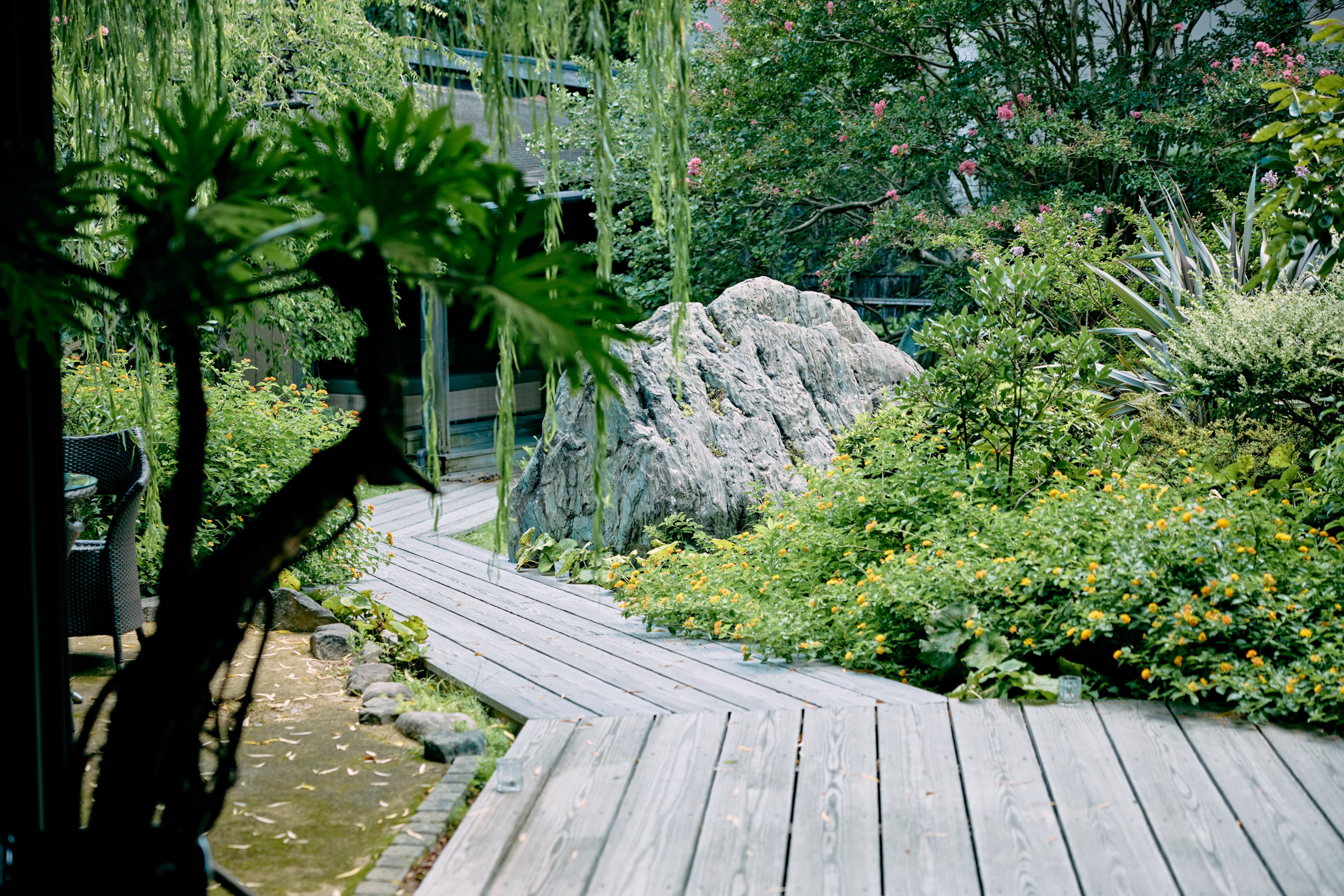 A tranquil garden courtyard for relaxing moments.
A tranquil garden courtyard for relaxing moments.
Among the accommodations, the Maisonette Villa Shoju in particular catches the eye: a private deck stretches directly from the living room to the shoreline, with the sea just steps away. Each villa comes with fishing rods and lures, so guests can enjoy angling at their own pace.
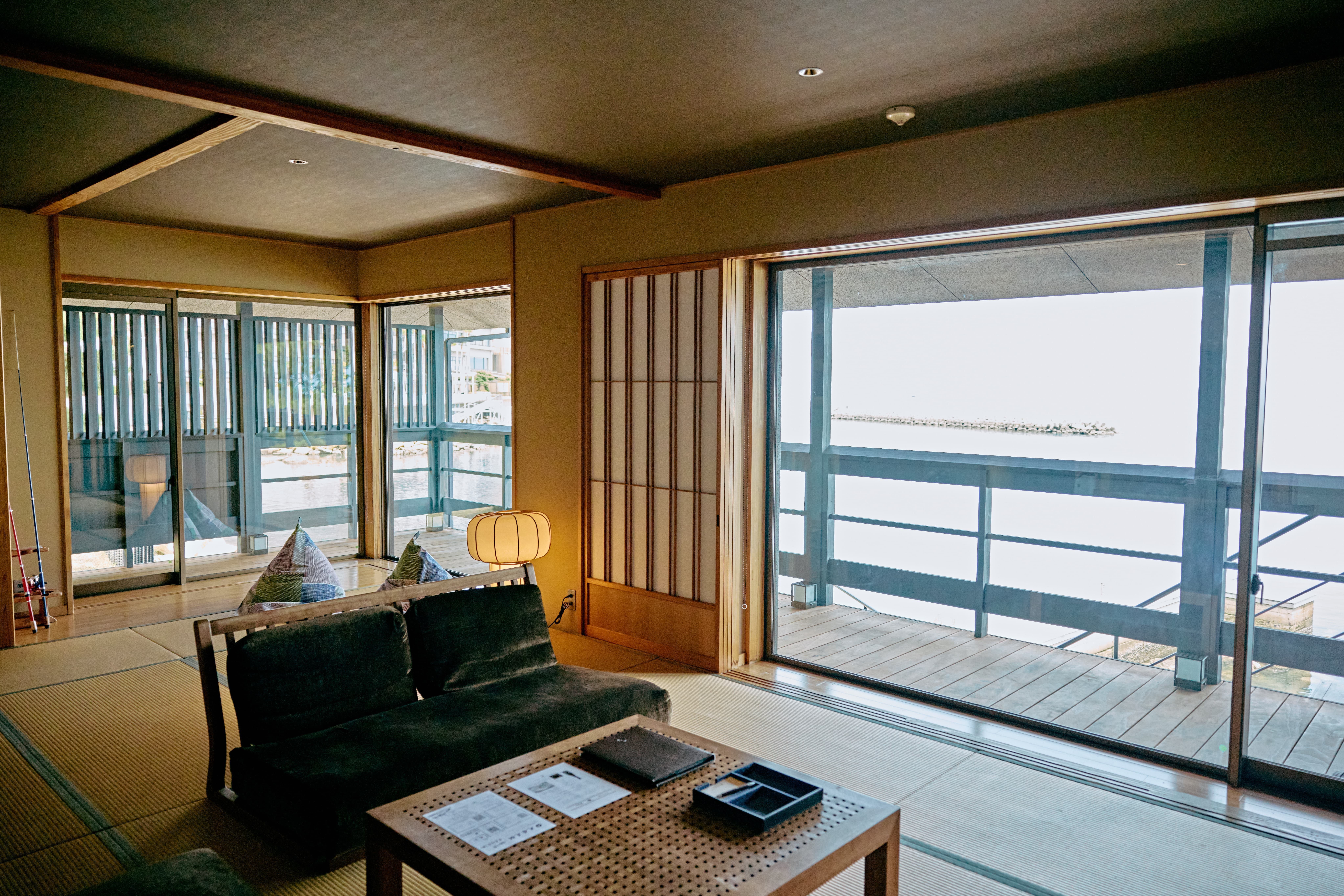 The living room of Maisonette Villa Shoju. Beyond the terrace lies the private deck.
The living room of Maisonette Villa Shoju. Beyond the terrace lies the private deck.
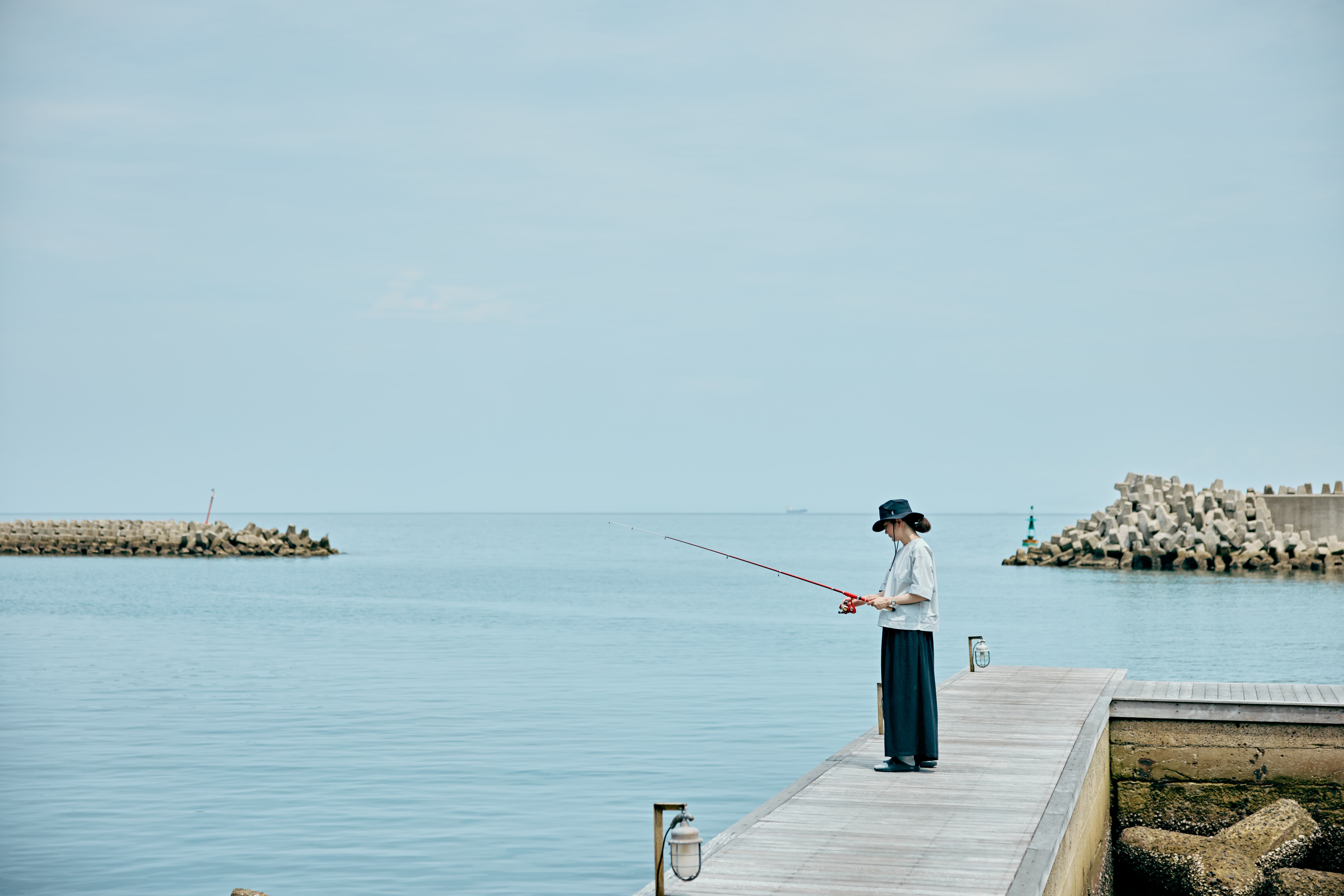 A private deck equipped for fishing.
A private deck equipped for fishing.

Time melts away as you cast your line, the sea breeze on your face and the surface of the water shimmering before you. Depending on the season, horse mackerel and Japanese red seaperch are among the catches you might reel in from your private deck.
Next door, Yumesenkei Besso Amahara’s sister hotel Awaji Yumesenkei features a seawater fishing pond stocked with farmed red sea bream. Rods and bait are included, with rental fees of 3,300 yen for adults and 2,200 yen for children.
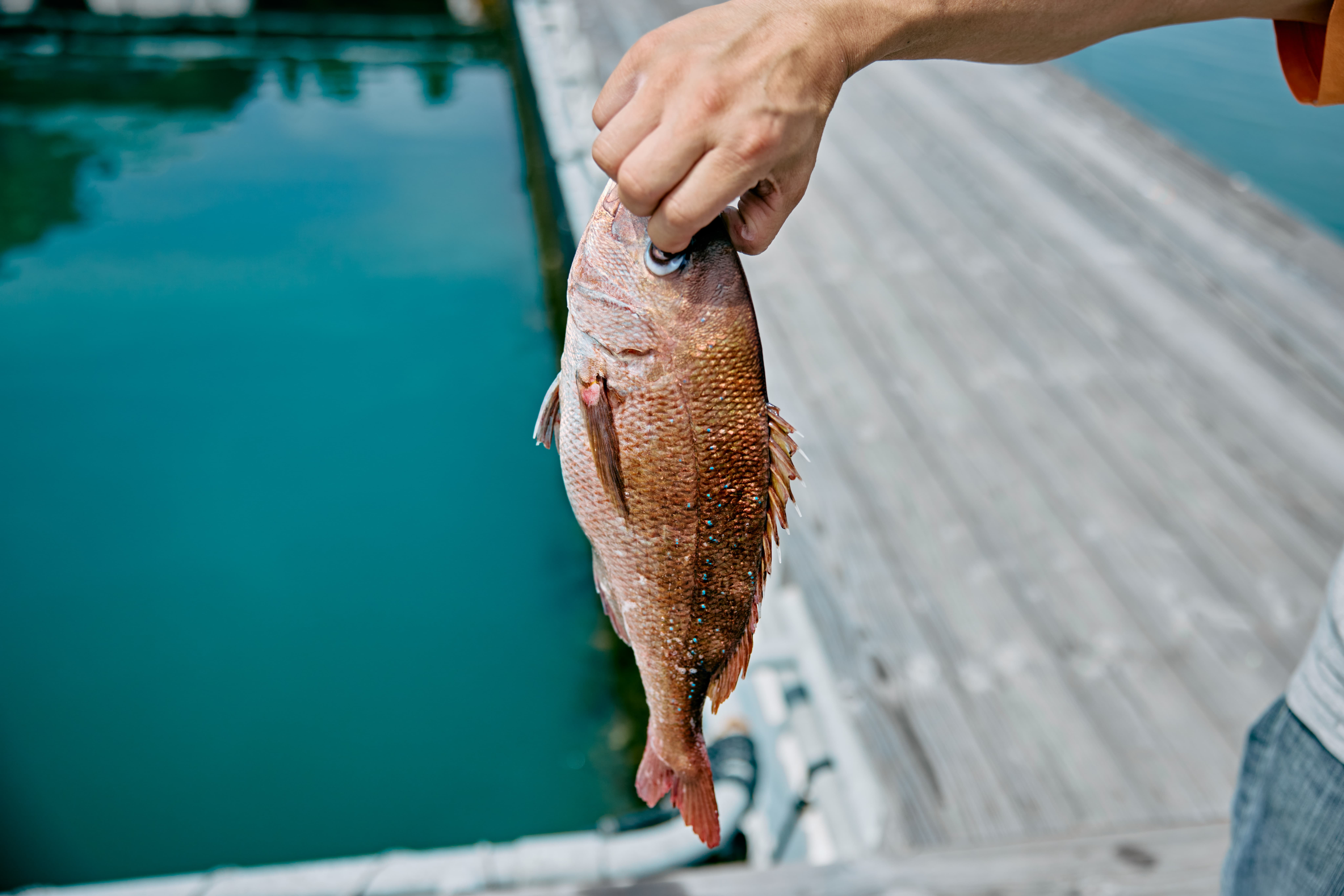
Whatever you catch—whether from the sea or the pond—can be prepared by the hotel’s chefs and served at dinner (processing fee from 440 yen).
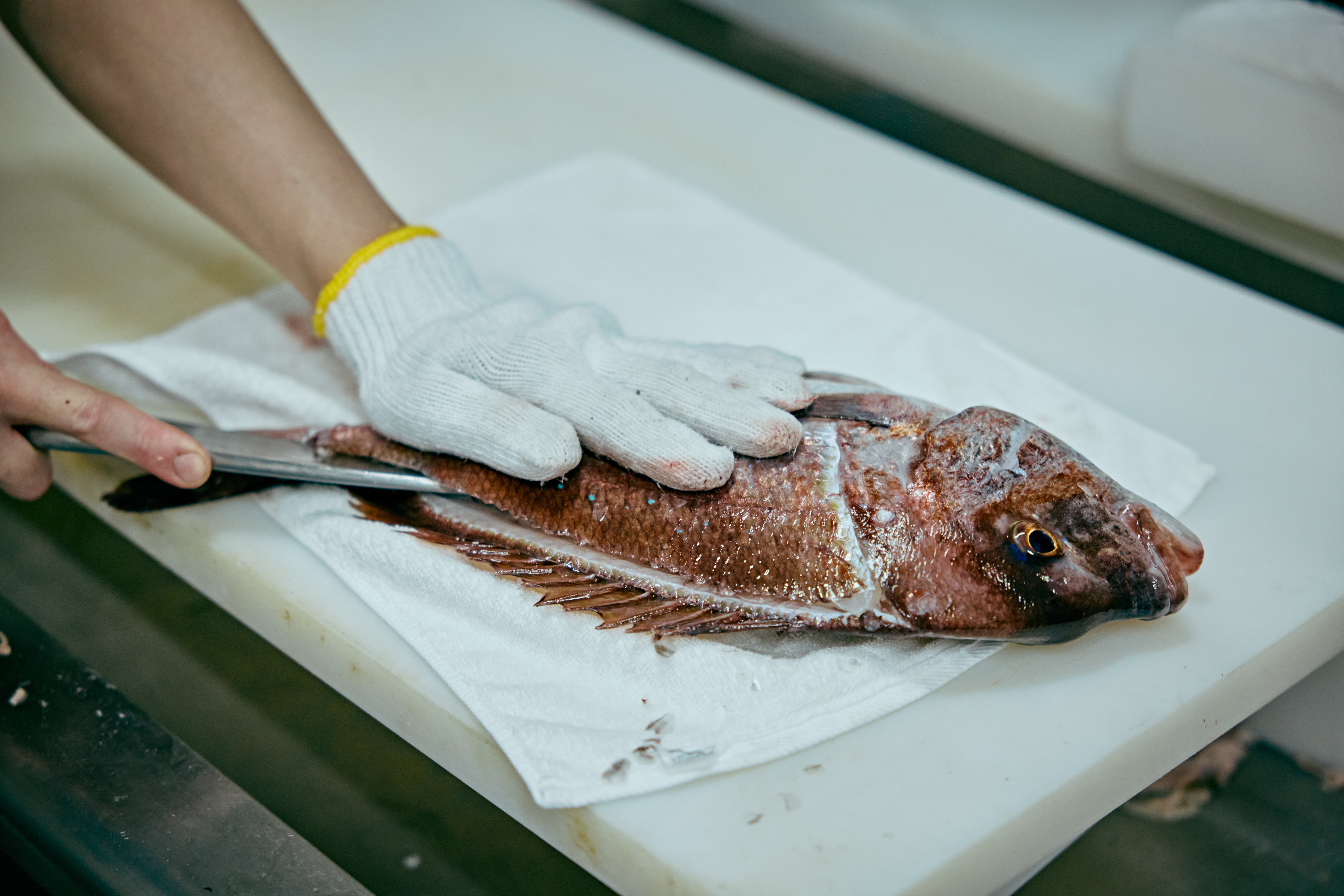
For example, if you were to catch a red sea bream, you could choose to have it served as sashimi, simmered, or grilled with salt. As sashimi, it is a particularly fine treat—plump, springy, and full of flavor.
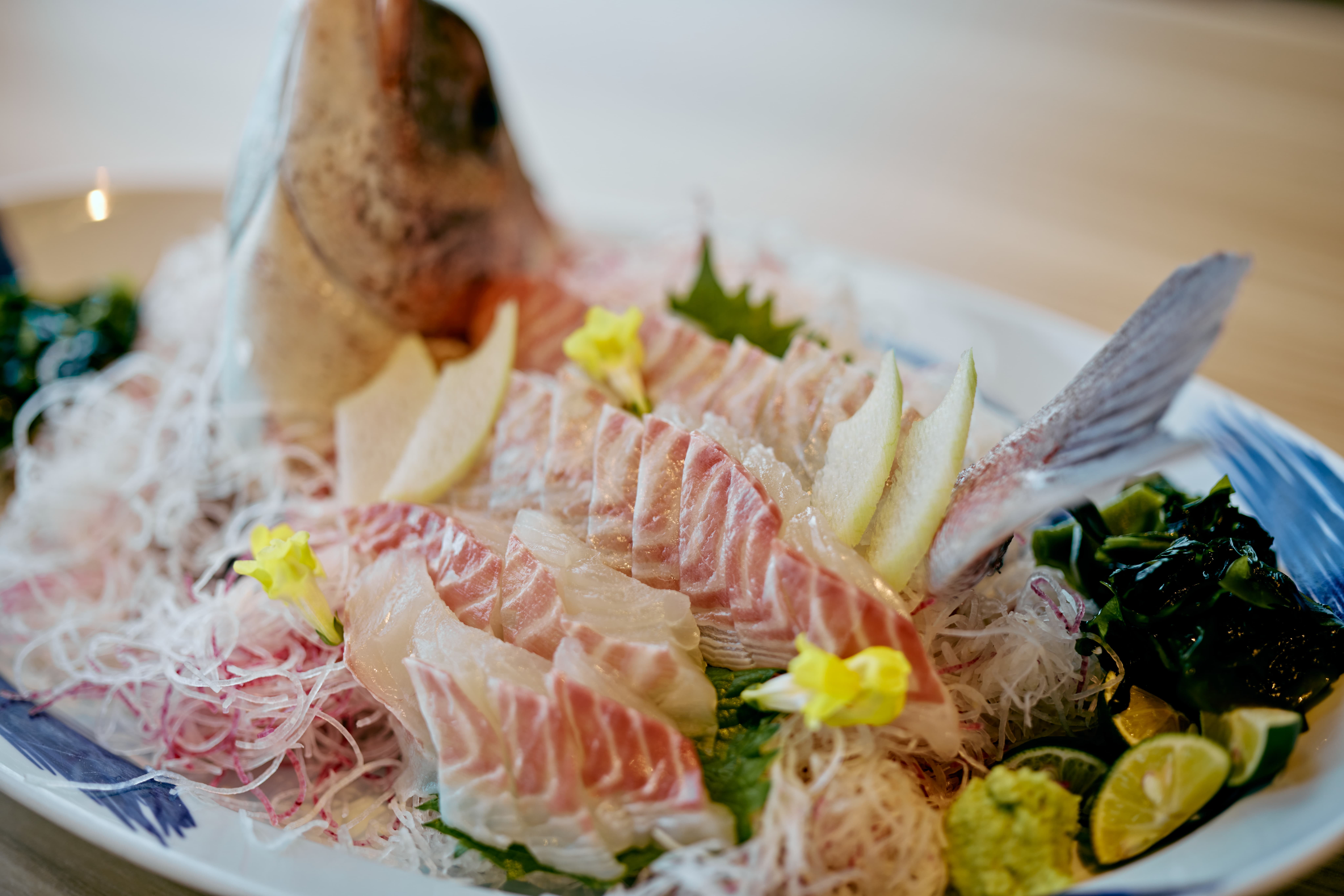 Red sea bream sashimi.
Red sea bream sashimi.
Relaxation Time in an Ocean-View Hot Spring
After fishing, take the opportunity to refresh yourself in the open-air bath on your room’s deck terrace. With service that prioritizes guest privacy and the refined atmosphere of a private villa, everyday concerns slip away as body and mind gently unwind.
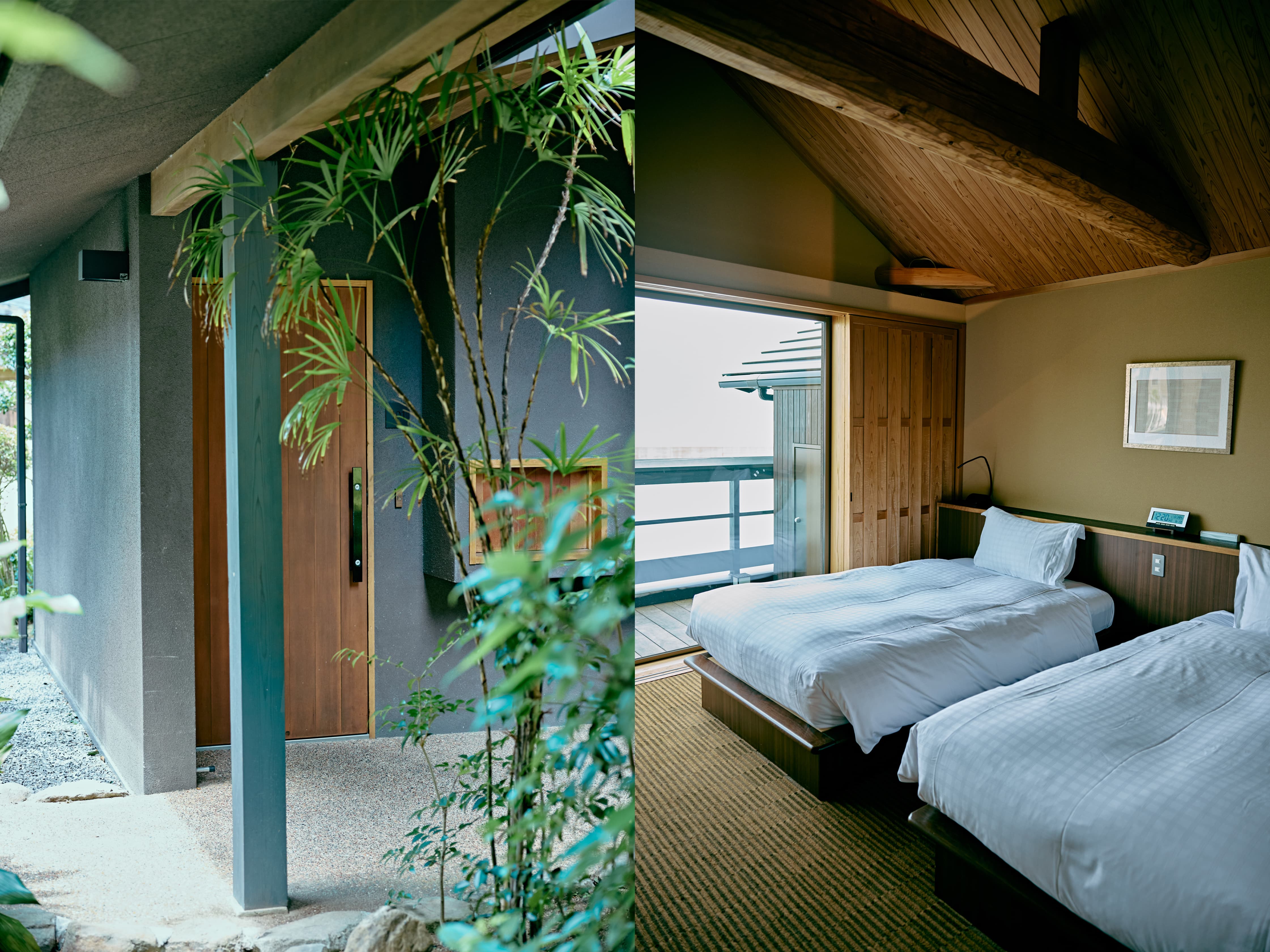 Entrance of Maisonette Villa Shoju (left) and the upstairs bedroom.
Entrance of Maisonette Villa Shoju (left) and the upstairs bedroom.
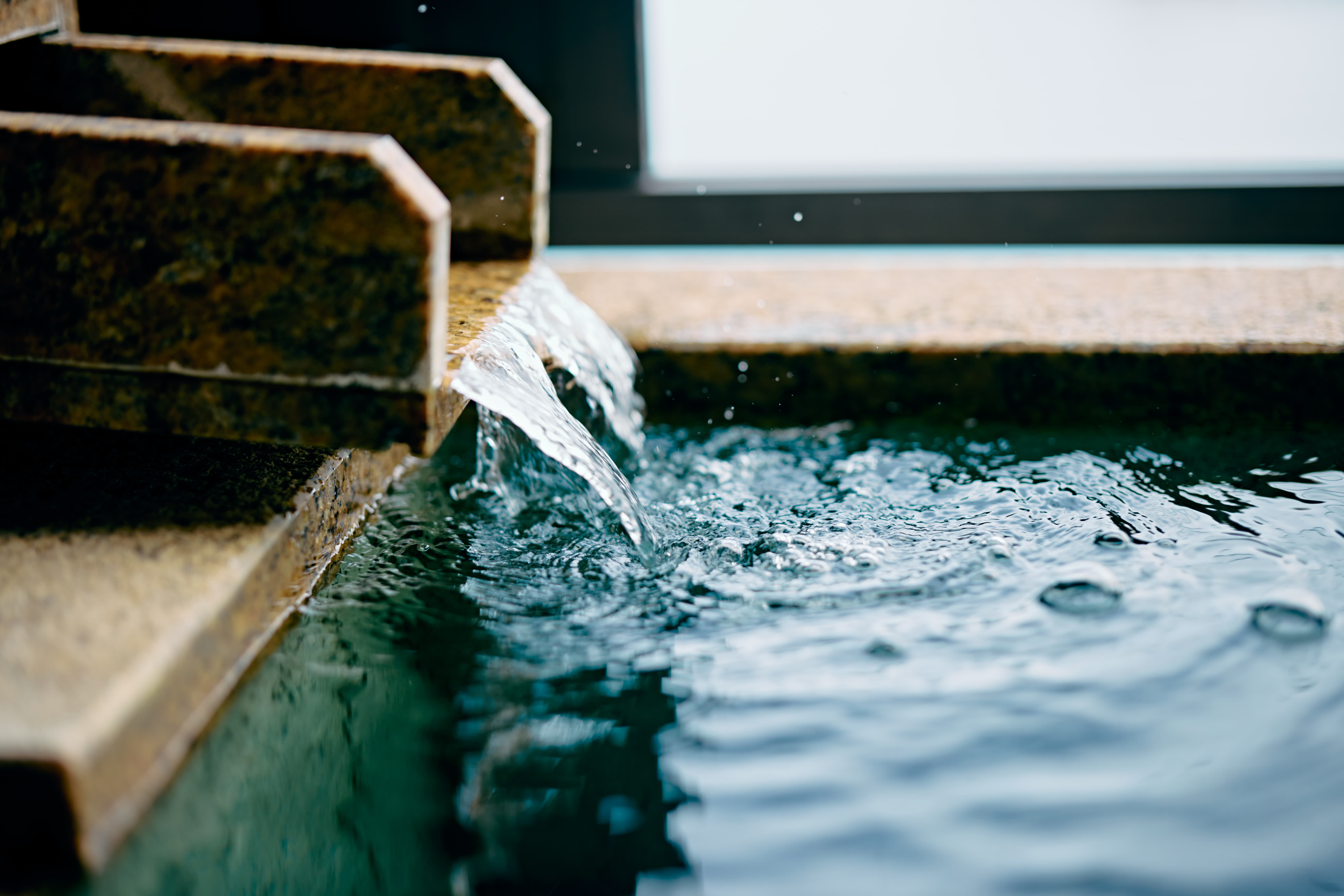 An open-air bath on the terrace, overlooking the sea.
An open-air bath on the terrace, overlooking the sea.
The grounds of Yumesenkei Besso Amahara are connected by corridors to its sister properties, making it easy to enjoy hot spring hopping among the different facilities.
One highlight is the Tenkyu-no-Shizuku Spa, the grand bath at Awaji Yumesenkei, right next to Amahara. Here, the hot spring blends seamlessly with the horizon in an “infinity bath” that merges visually with the sea. The sweeping view stretches from Osaka Bay to the Kitan Strait. Try and visit in the early morning, to be rewarded with a breathtaking display when the sun rises from the horizon.
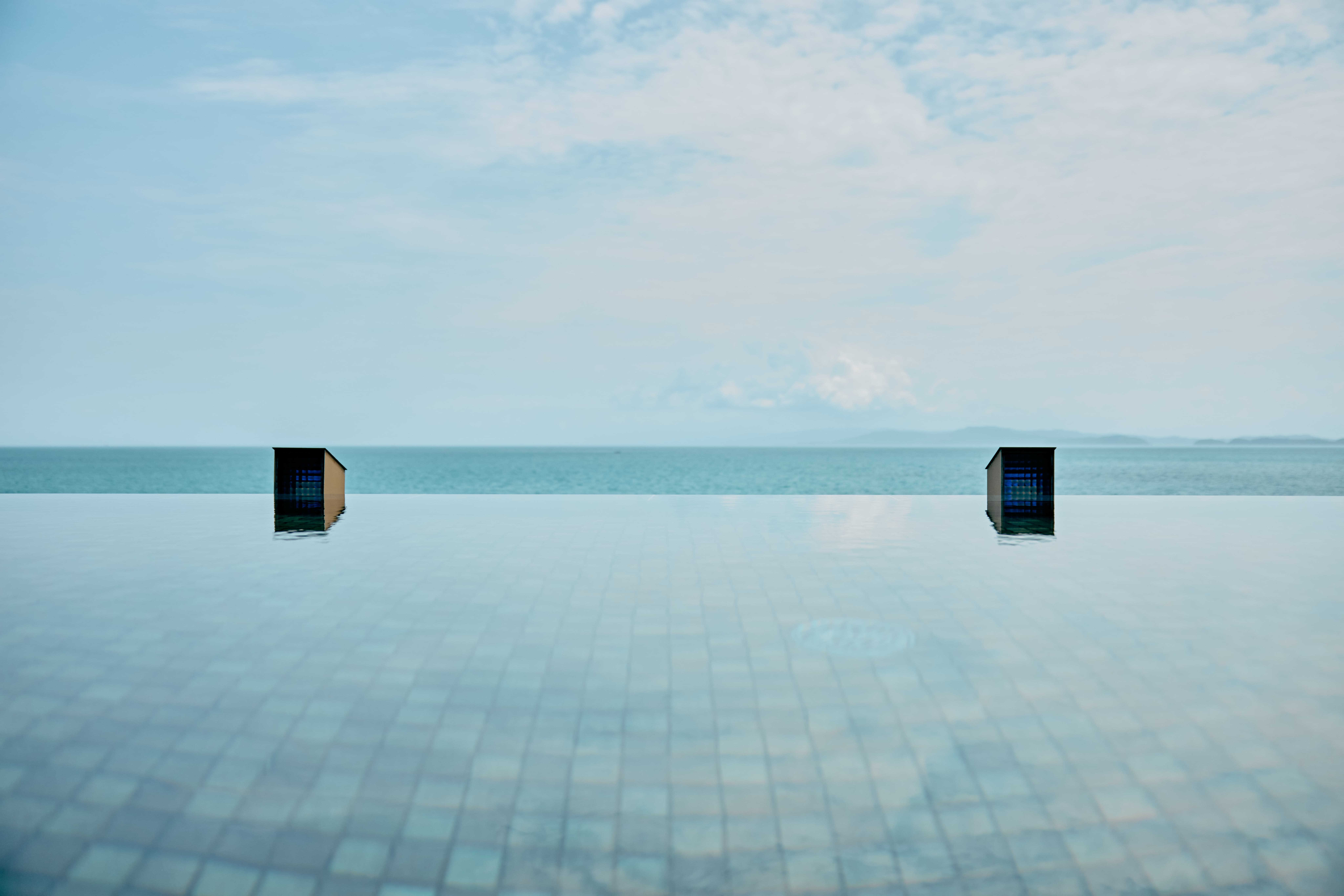
BOOK YOUR STAY ON AWAJI ISLAND
Osaka-Bred Dashi Culture
The seafood landed on Awaji Island is distributed to markets all across Japan. Among them, Osaka plays a central role in tracing the origins of washoku. From Sumoto on Awaji, it takes about an hour and 40 minutes by highway bus and train to reach the city.
With its waterways, Osaka thrived during the Edo period as the nation’s logistics and commercial hub, earning the nickname “the nation’s kitchen.” Goods from across Japan poured in, including kombu kelp from Hokkaido and katsuobushi (dried bonito flakes) made from fish landed in Kochi and Kagoshima. Out of this came the concept of awase-dashi, a blended broth of kelp and katsuobushi—the dashi culture now considered the foundation of washoku.
One of the best places to experience this culinary culture firsthand is the Osaka Kizu Ichiba market. Within its grounds, more than 100 wholesalers sell everything from seafood to meat and fresh produce, drawing professionals from the food industry each day.
On the second and final Saturday of every month, the market opens its doors to the public with the lively Kizu Asaichi morning market, where visitors can shop alongside professionals.
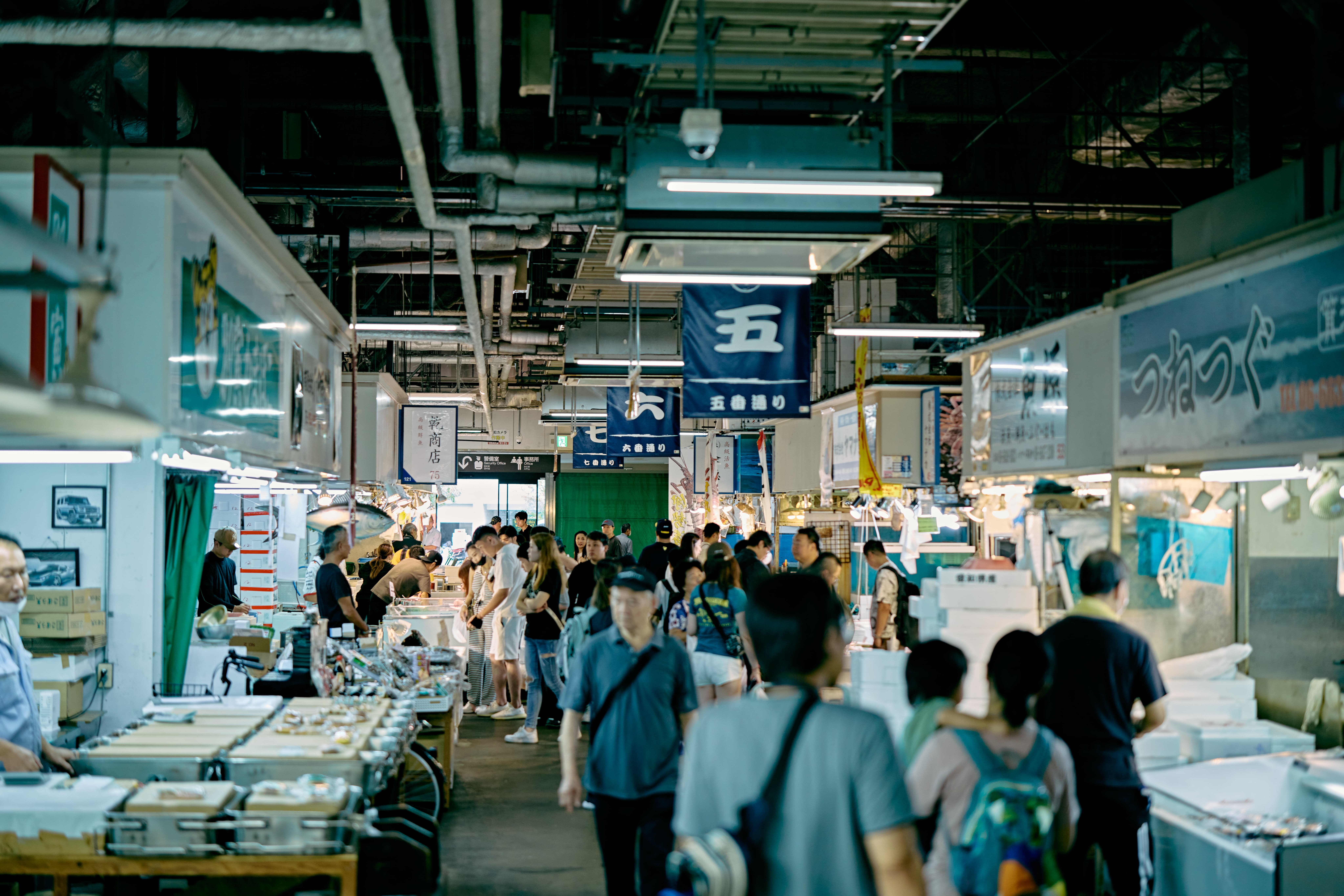
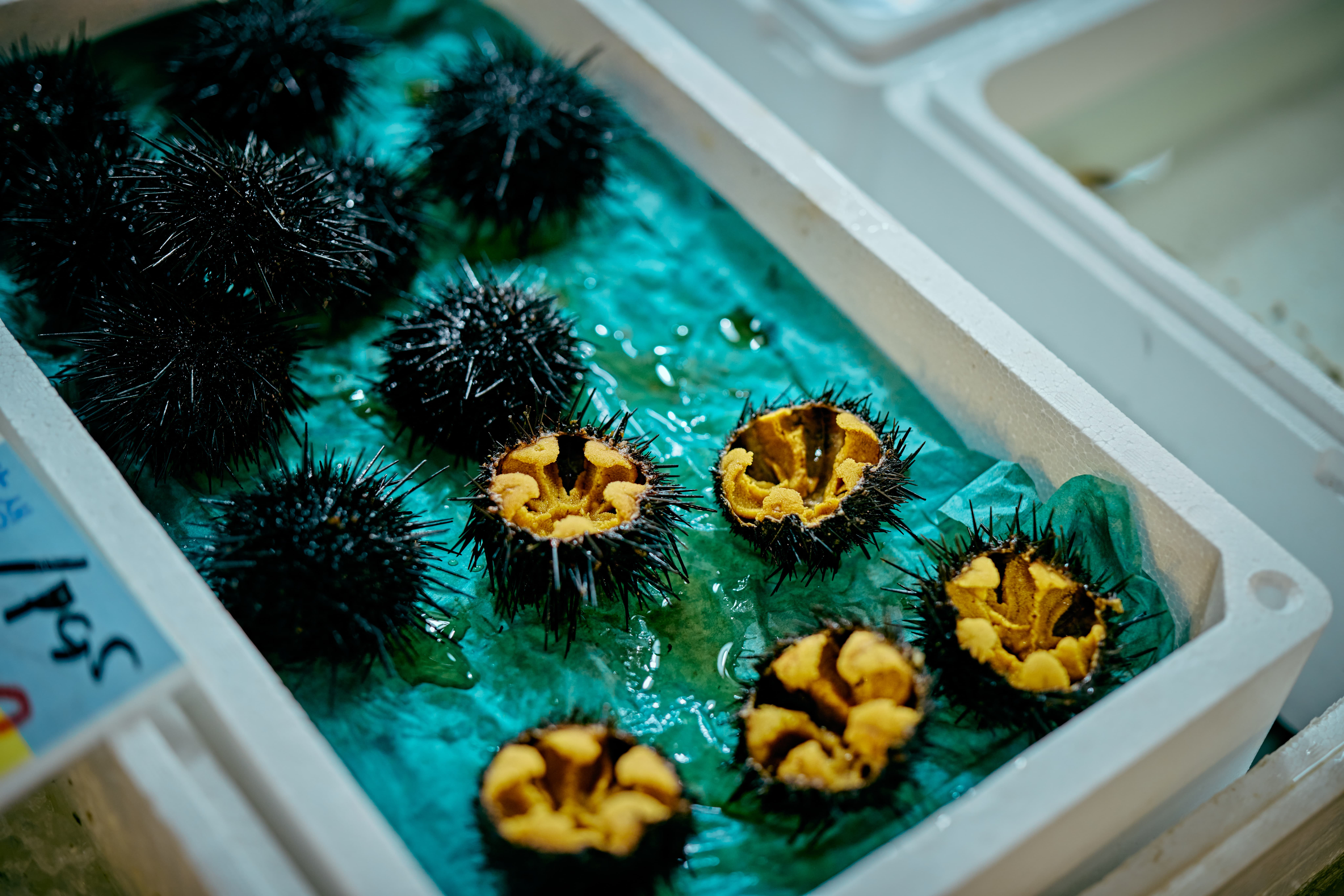 Fresh seafood from across Japan, including uni (sea urchin).
Fresh seafood from across Japan, including uni (sea urchin).
Inside the market, you’ll find several specialty shops dedicated to the craft of dashi.
At Fukusukeya Katsuobushi-ten, shelves are lined with premium katsuobushi, including the top-grade Kanmejika, made from seasonal sodabushi (dried, smoked frigate tuna fillets) landed at Tosashimizu Port in Kochi. Many of these prized cuts are rarely seen outside professional kitchens.
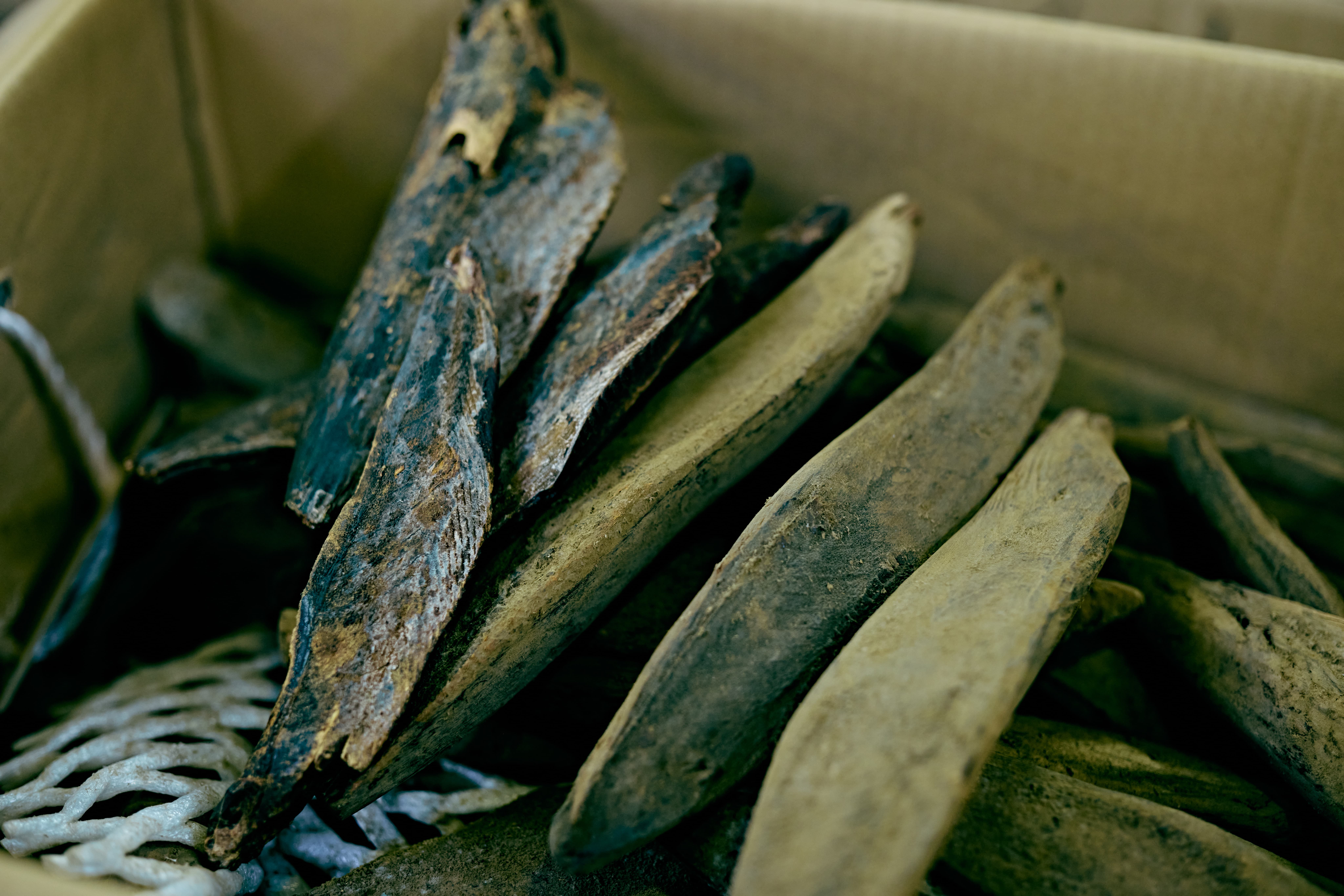 Blocks of katsuobushi on display before shaving.
Blocks of katsuobushi on display before shaving.
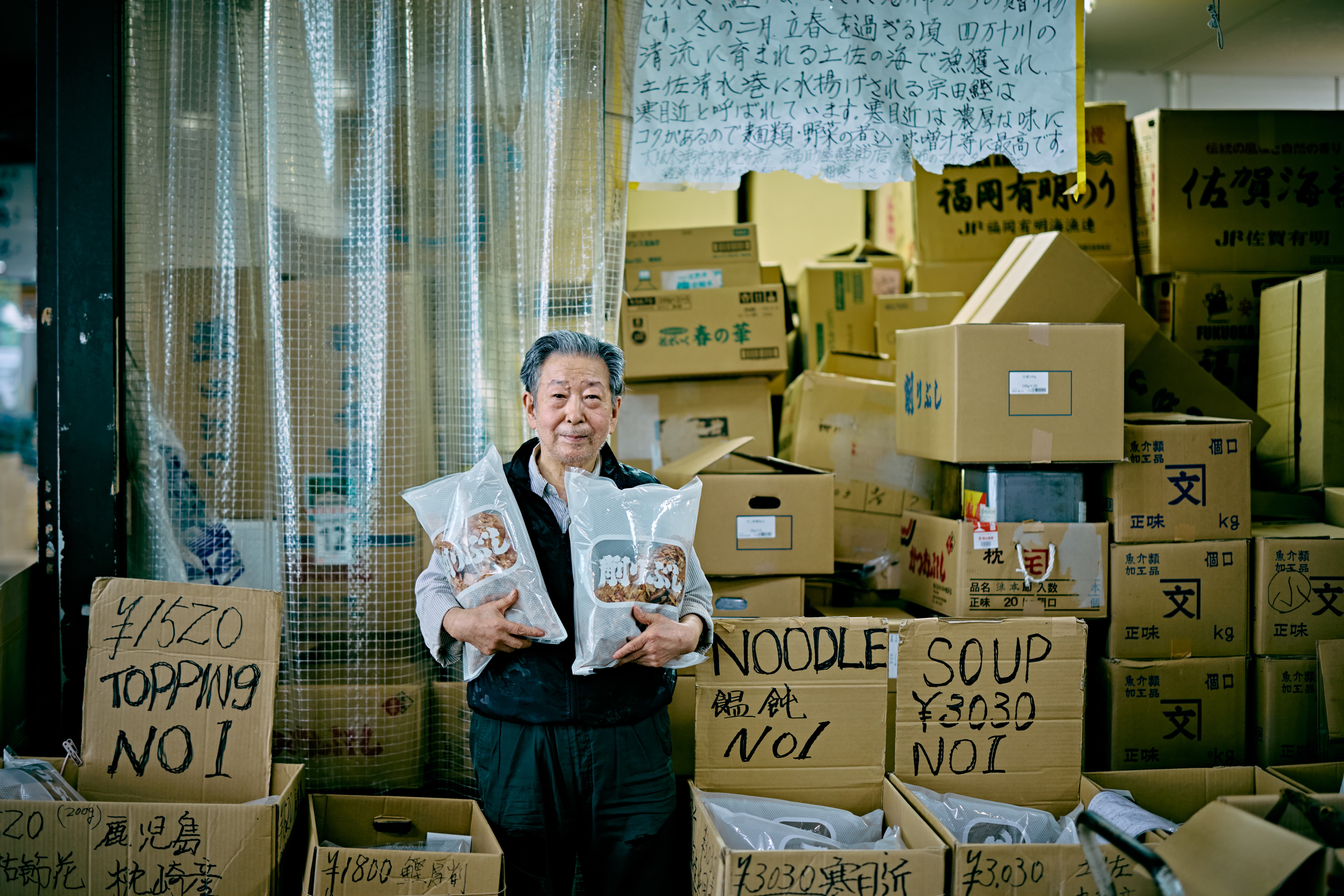 Shop owner Shinji Horie.
Shop owner Shinji Horie.
“The Kanmejika variety produces a rich, full-bodied broth that’s ideal for udon, vegetable stews, or miso soup,” explains second-generation owner Shinji Horie.
With his deep knowledge of washoku, Horie offers tailored advice, recommending the perfect katsuobushi based on each customer’s preferences and cooking style.
Meanwhile, just down the same street, Fukuhide Katsuobushi-ten specializes in katsuobushi sourced from Kyushu, particularly Makurazaki in Kagoshima. Their best-selling product is the Blend Dashi, a perfectly balanced mix of sodabushi, mackerel, and tuna shavings—versatile enough to be used in countless washoku dishes. The blend is a hit not only with locals but also with international visitors too—some of whom return again and again just to restock.
 Freshly shaved Blend Dashi, packed to order, 200g for 500 yen.
Freshly shaved Blend Dashi, packed to order, 200g for 500 yen.
At the heart of awase-dashi lies the pairing of katsuobushi with kombu kelp. At Mino Shoten, a wholesaler of kelp and other seaweed products, visitors can browse a wide range of high-quality kombu varieties.
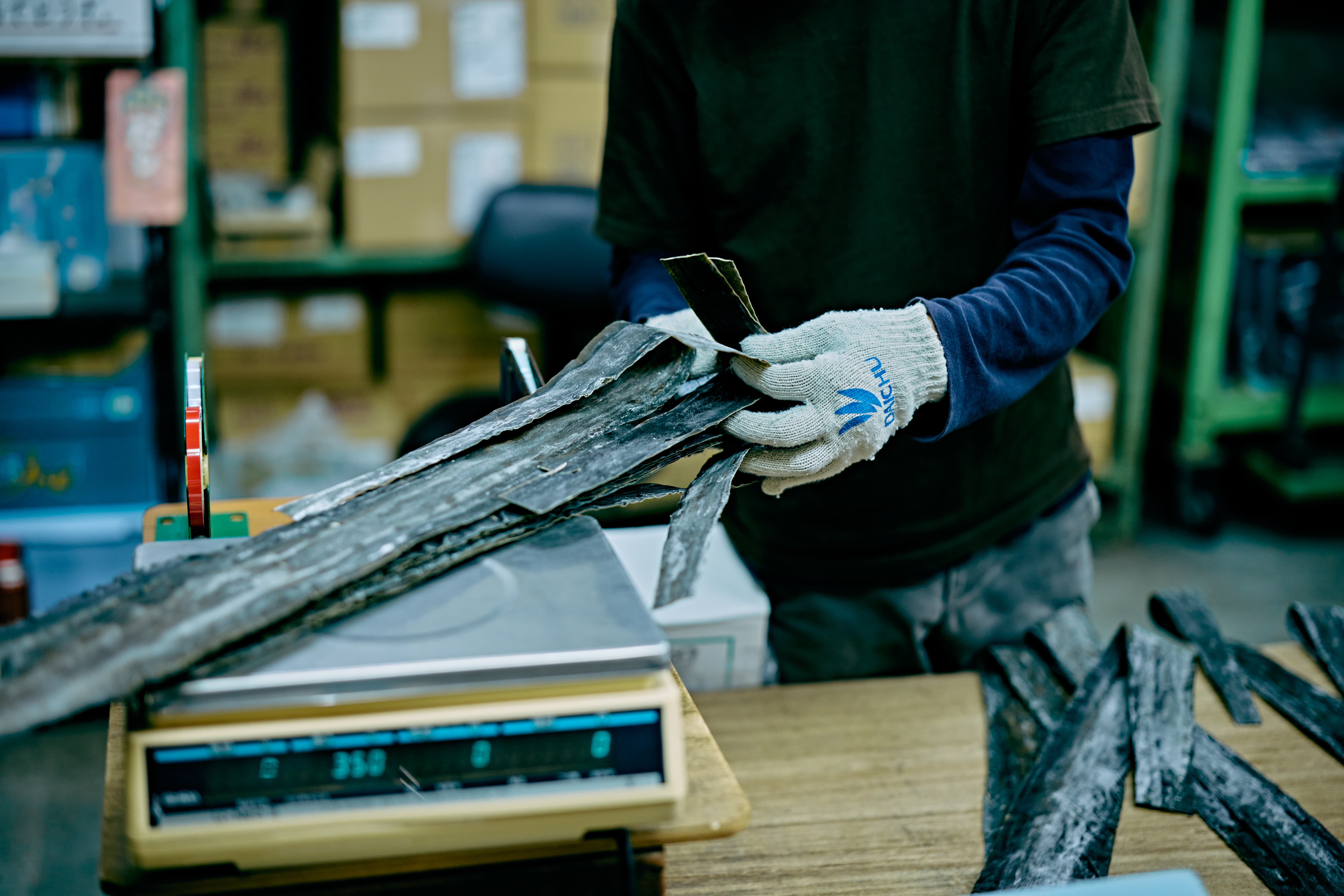 Kombu is also sold by weight. Mino Shoten’s headquarters are in Tsuruga, Fukui Prefecture.
Kombu is also sold by weight. Mino Shoten’s headquarters are in Tsuruga, Fukui Prefecture.
“Kombu is primarily harvested in Hokkaido, but each region produces a distinct variety,” explains shop manager Ikunori Ichimaru. “For example, Rishiri kombu from northern Hokkaido makes a light, refined broth, while Rausu kombu from the east yields a richer, more robust flavor.”
Another favorite is oboro kombu, a delicacy from Tsuruga in Fukui Prefecture. Craftsmen painstakingly shave sheets of kelp that have been softened in vinegar, creating delicate, feathery strands.
Many international visitors take home katsuobushi and kombu as souvenirs, using them to make dashi and recreate Japanese flavors in their own kitchens. These authentic experiences are essential ways in which the depth and soul of washoku become even more tangible.
Yura Fisheries Cooperative Auction Experience
Address: 1-20-29 Yura, Sumoto, Hyogo
Inquiries: Awaji Island Tourism Association
Tel.: 0799-22-0742
Hours: Monday–Friday, 9:00–17:00
Fee: 8,000 yen per person
URL:https://www.awajishima-kanko.jp/taiken/detail.php?id=30
Yumesenkei Besso Amahara
Address: 1052-2 Kojitani, Sumoto, Hyogo
Tel.: 0570-079922 (Hotel New Awaji Group Navi Dial)
URL:https://www.yumesenkei.com/amahara/
Osaka Kizu Ichiba
Address: 2-2-8 Shikitsu-higashi, Naniwa, Osaka
Tel.: 06-6648-1900
Hours: Vary by store; see official website for details
Closed: Sundays, public holidays, and occasional market holidays (see calendar on website)
※ Kizu Asaichi morning market is held on the 2nd and final Saturday of every month, 9:00–12:00
Fukusukeya Katsuobushi-ten
Tel.: 06-6641-6357
Hours: 3:30–12:00
URL:https://kiduichiba.jp/shop/fukusukeyakatsuobushiten/
Fukuhideya Katsuobushi-ten
Tel.: 06-6641-4895
Hours: 4:00–14:00
URL:https://kiduichiba.jp/shop/fukuhidekatsuobushiten/
Mino Shoten
Tel.: 06-6648-1876
Hours: 5:30~13:30 (exceptions apply)
URL:https://kiduichiba.jp/shop/minoshoten/
他の記事では「Land of Food」もあります。
https://www.shoku.pref.mie.lg.jp/en/contents03.html
https://en.awajishima-resort.com/discover-the-charm-of-the-land-of-food-awaji-island/
https://www.yumesenkei.com/amahara/en/
https://www.mlit.go.jp/tagengo-db/en/R1-02472.html





